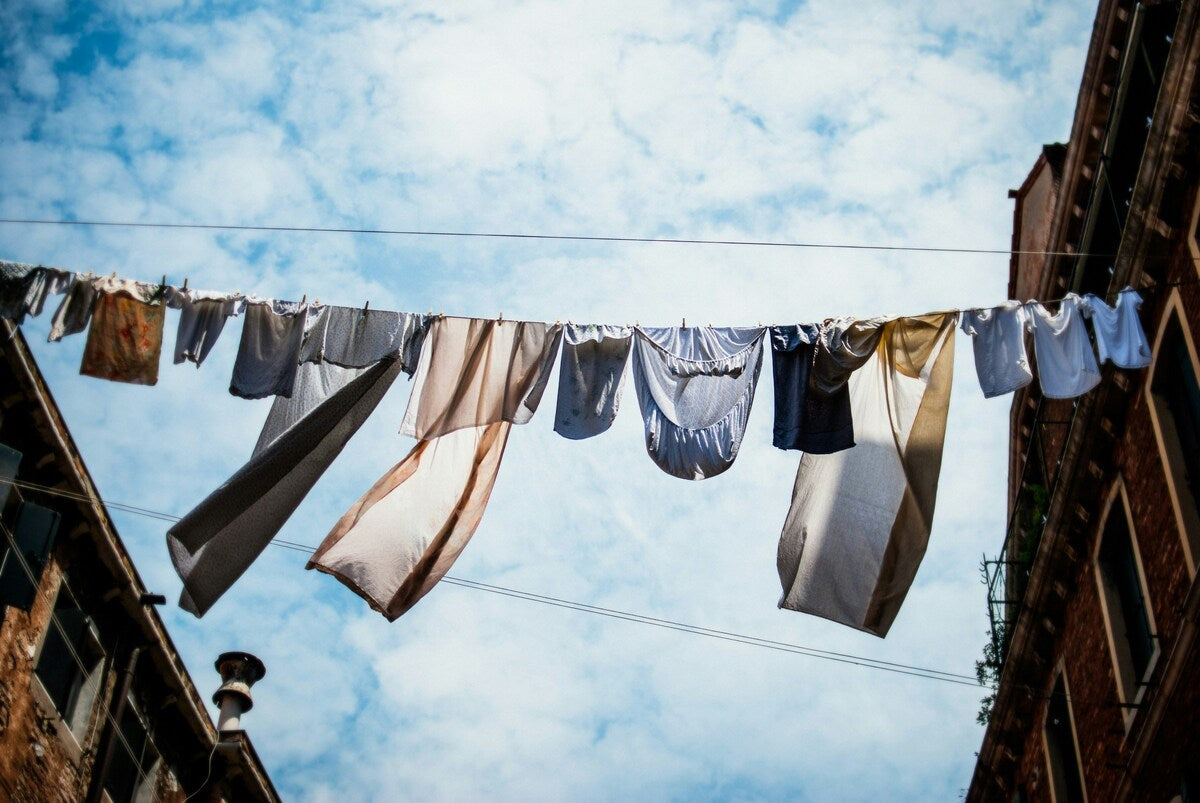
Sleepwear Care: Tips to Keep Your Pyjamas Fresh and Clean
|
Time to read 4 min
This store requires javascript to be enabled for some features to work correctly.
Written by: Editorial Team
|
Time to read 4 min
Let's face it - very few of us actually like washing and caring for our clothes and would like to go as long as possible between these chores. With sleepwear in particular, we tend to re-wear these items far longer than our normal, daytime clothing. If you want to know how to clean and care for your items with ease, read on!
According to studies, the average Brit changes their pyjamas after approximately seven days (or nights) of wear. Experts in clothing and hygiene range in length, but most scientists and cleaning experts recommend a median of around three or four wears.
This means a lot of us are wearing our pyjamas about twice as long as we should be, which is pretty gross, but can cause a number of problems, including:
Synthetic fibres need to washed more frequently than natural fibre clothing, as synthetic materials aren't as sufficient in wicking away moisture, dirt, and oils.
Synthetic materials that require frequent washes include:
Examples of natural, breathable fibres that require fewer washes:
Always read the attached label for instructions before washing slippers - especially to check if they are machine washable. If not, it would be better to wash by hand, using warm (not hot) water and a mild detergent. Do not wring out the slipper or it may lose its shape. If you think the integral structure of your slipper is particularly delicate, spot-treat any stains individually using a mild brush and warm detergent with cornstarch or specialist material stain remover, leaving it to dry after delicate cleaning.
If you have allergies, sensitive or acne-prone skin, or tend to sweat a lot in bed, you should be changing your pyjamas more frequently regardless of the standard recommendation. It is paramount for your health and wellbeing to change your pyjamas every few days to prevent irritation or reactions.
Cleaning your nightwear effectively is essential, and when performed correctly, can help you go longer between washes and purchasing new pyjamas. Always refer to the instructions attached if available before cleaning your nightwear.
Many slippers are machine-washable, but it depends on the brand and materials. Others can be only spot-washed or hand-washed. Always read the instructions on the label.
Use low temperatures (30°C or below) for most nightwear. High temperatures should only be used for severe stains or specific materials, if the care label requests a certain temperature.
The Myza Editorial Team
The Myza Editorial Team works together to create and curate The Sleep Journal, a series of blog posts designed to help our customers with frequently asked questions and curiosities regarding everything in the world of sleep, from sleeping positions to skin and hair care. We also provide regular shopping guides, interviews, and reviews to provide insight into our hand-picked brand collaborations and the benefits they have to offer.
Receive 10% off your first order when you subscribe to our newsletter




